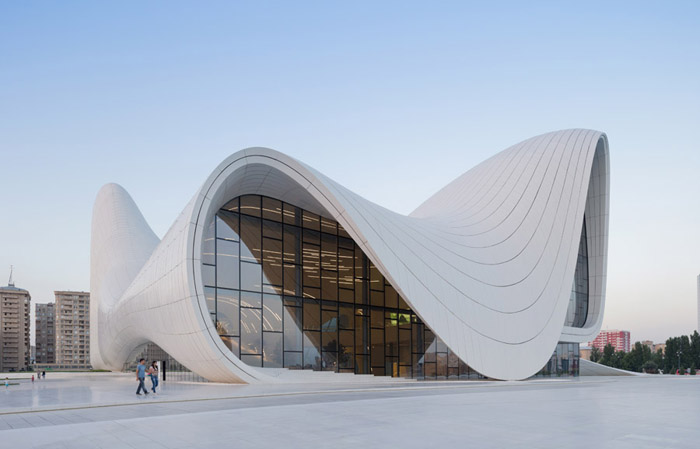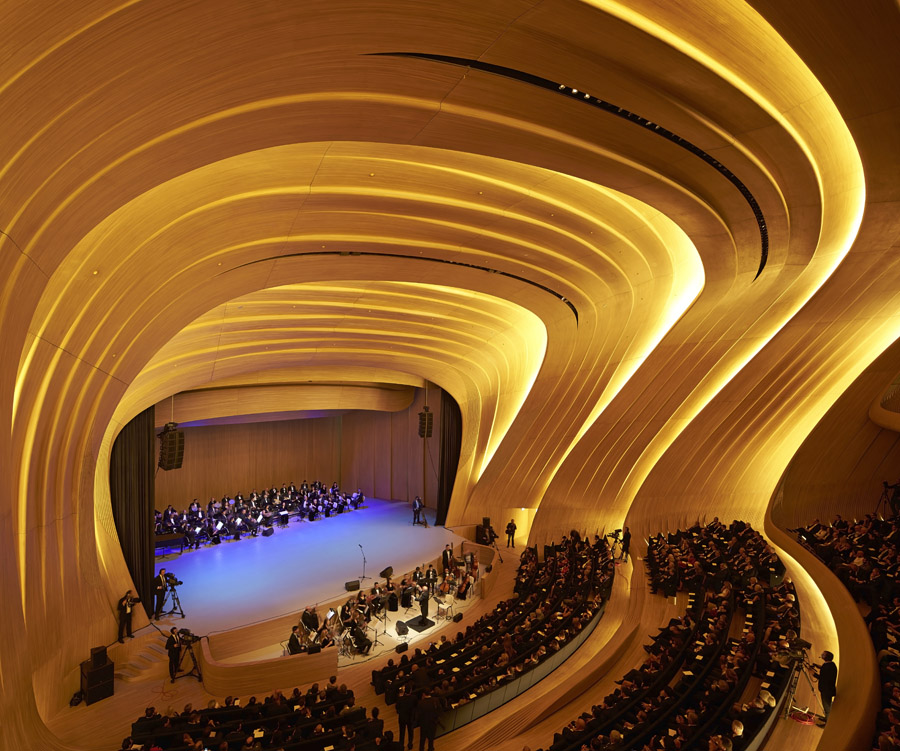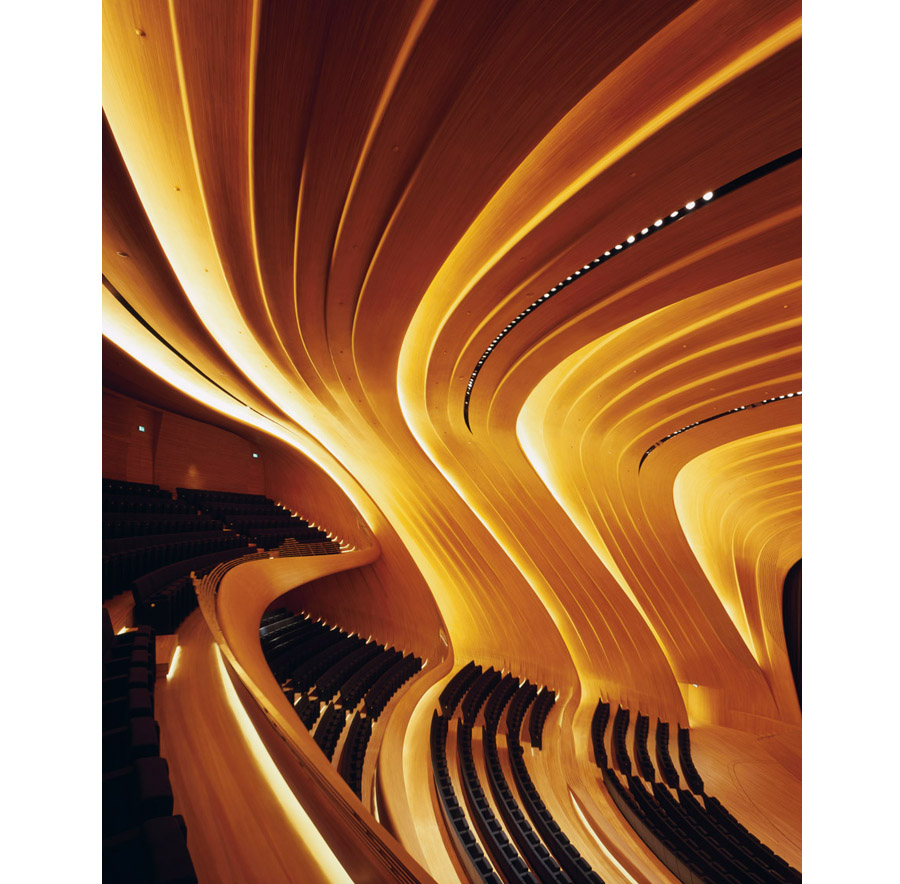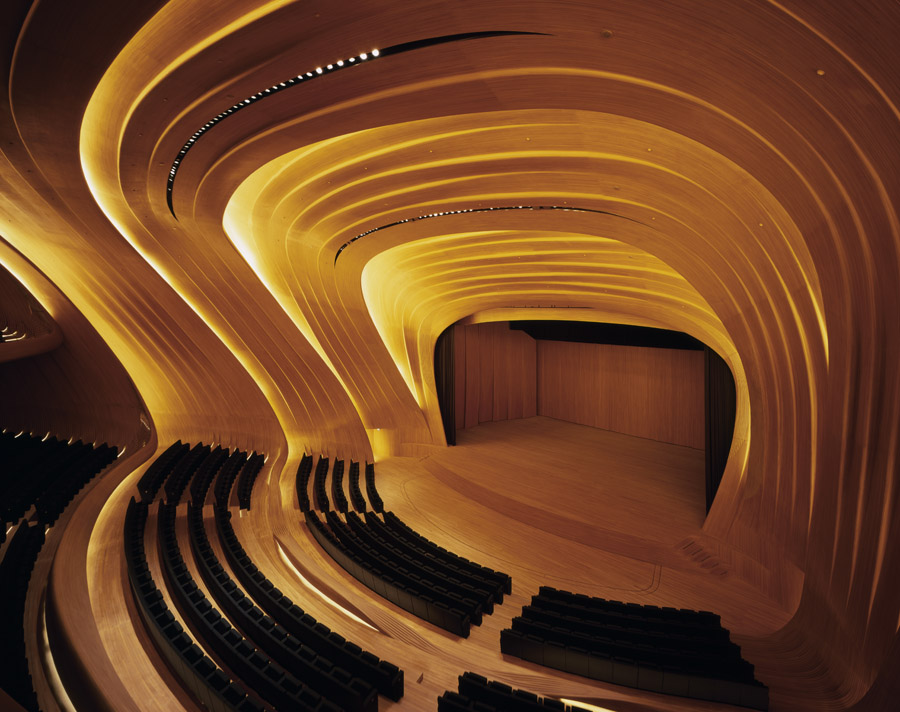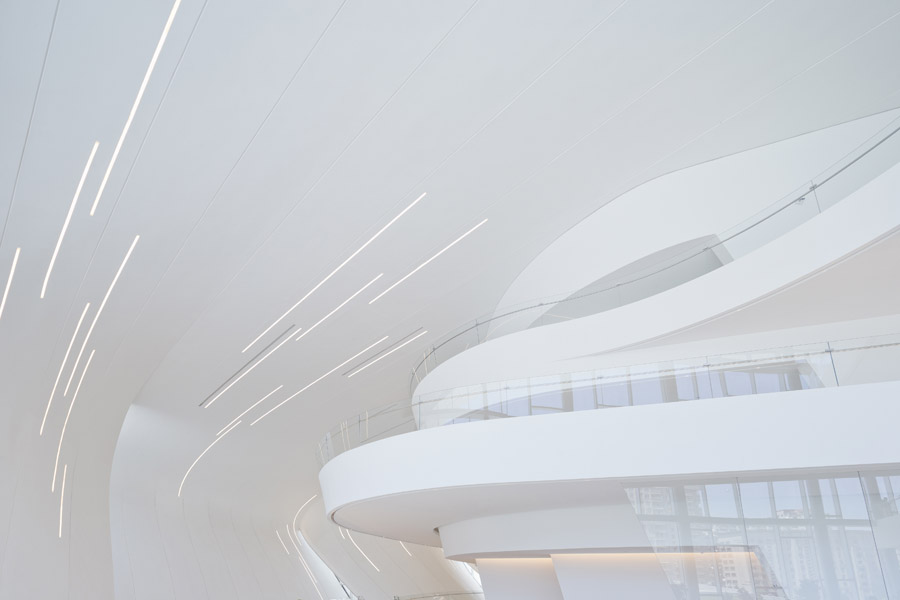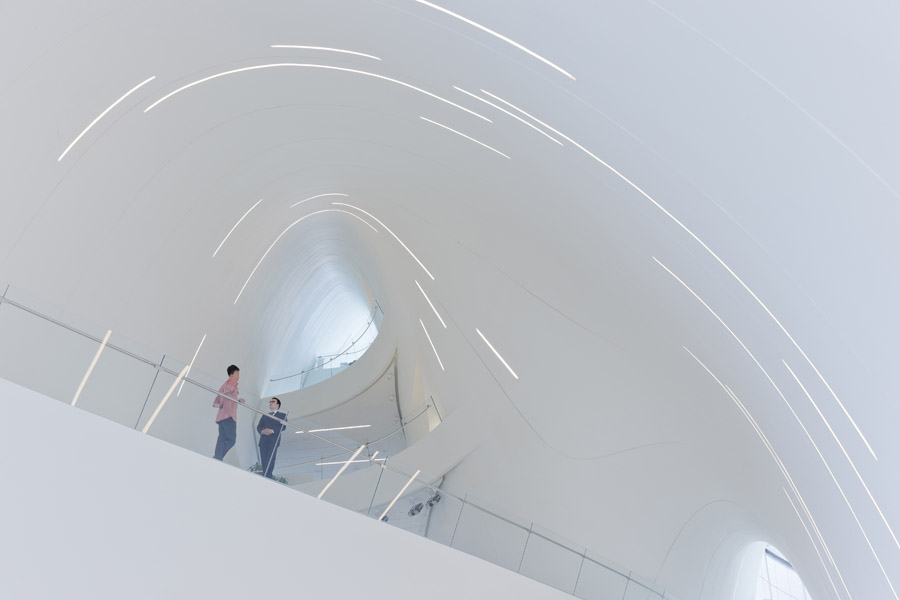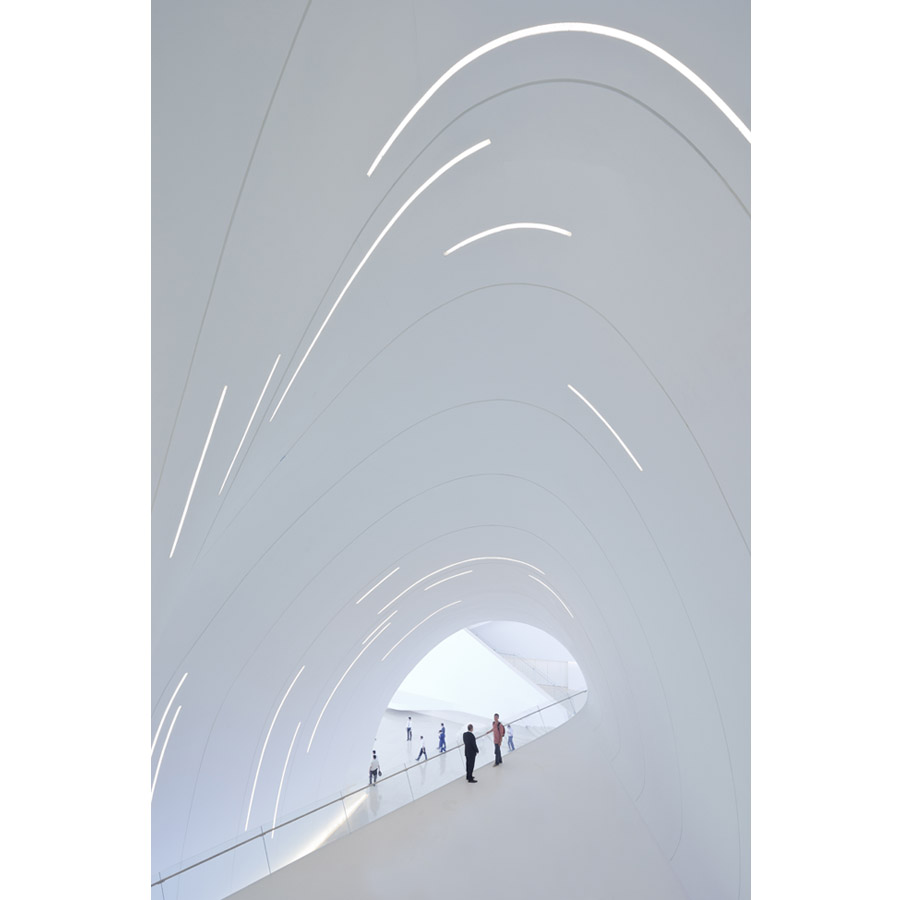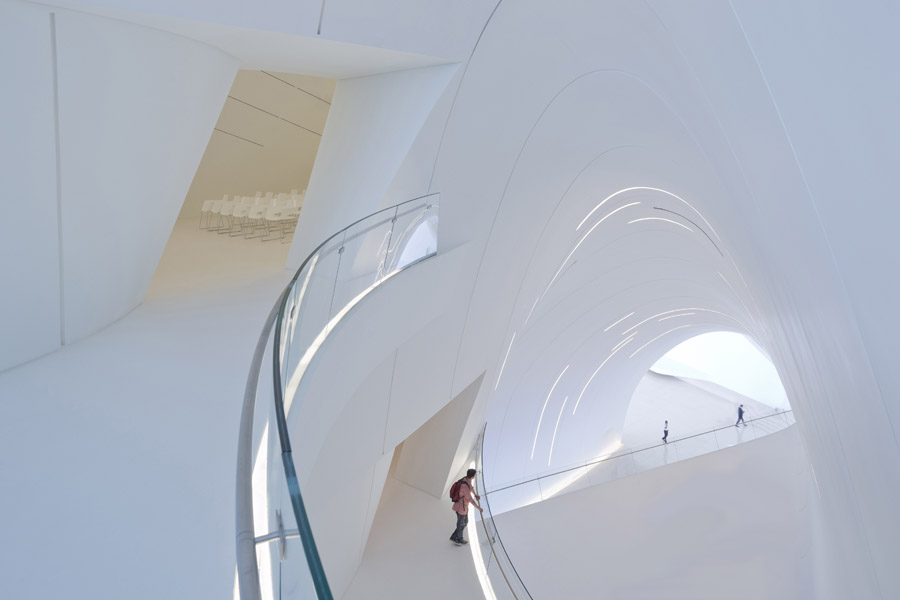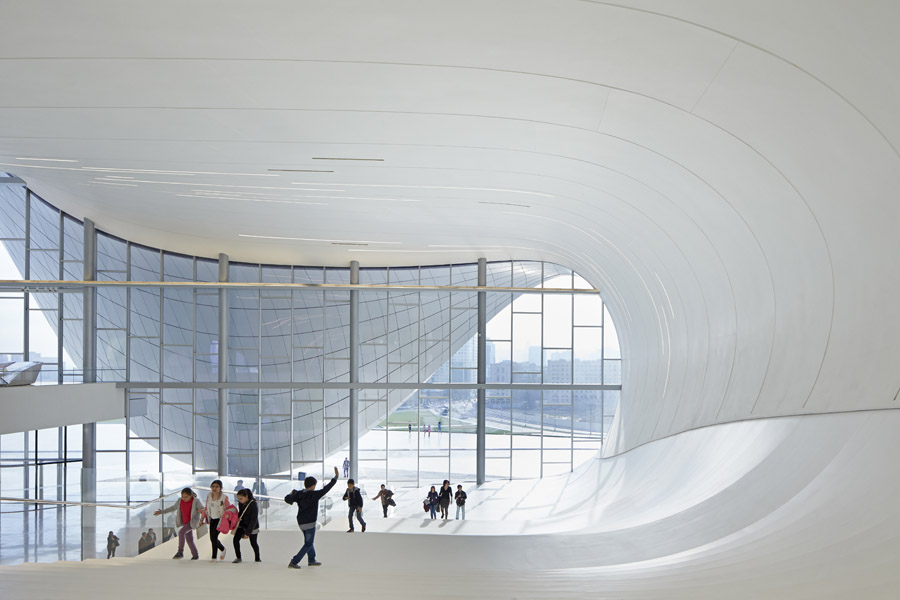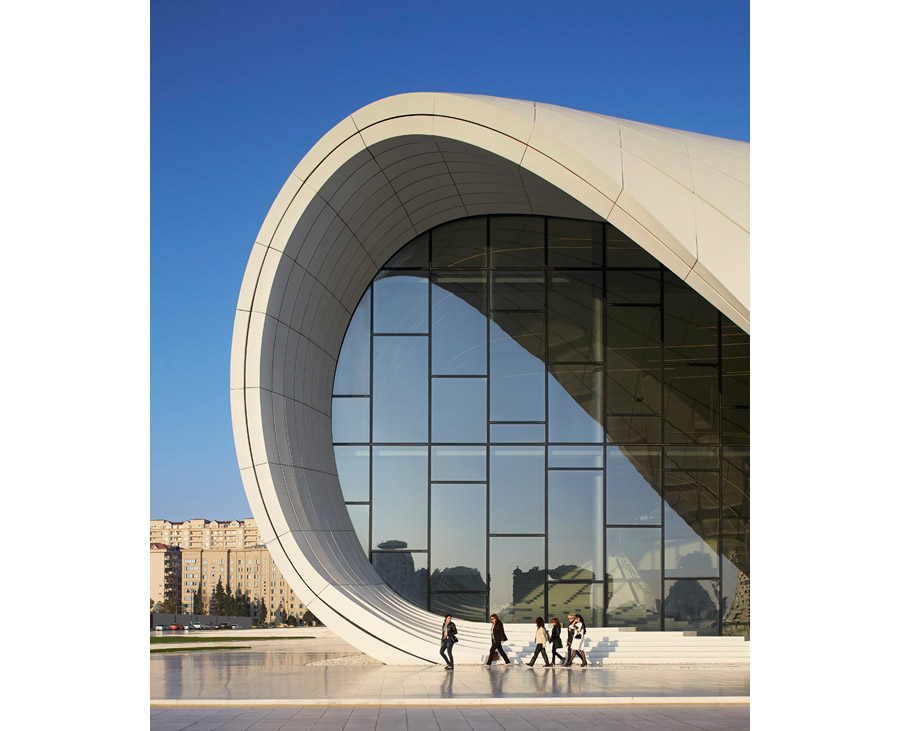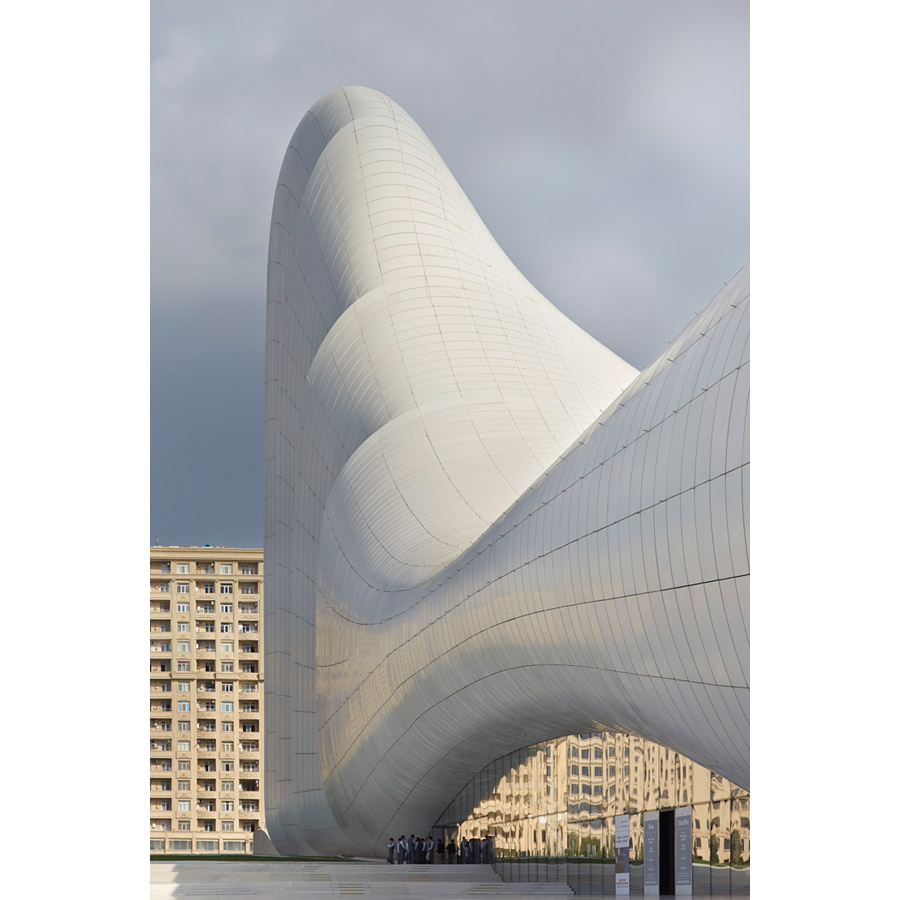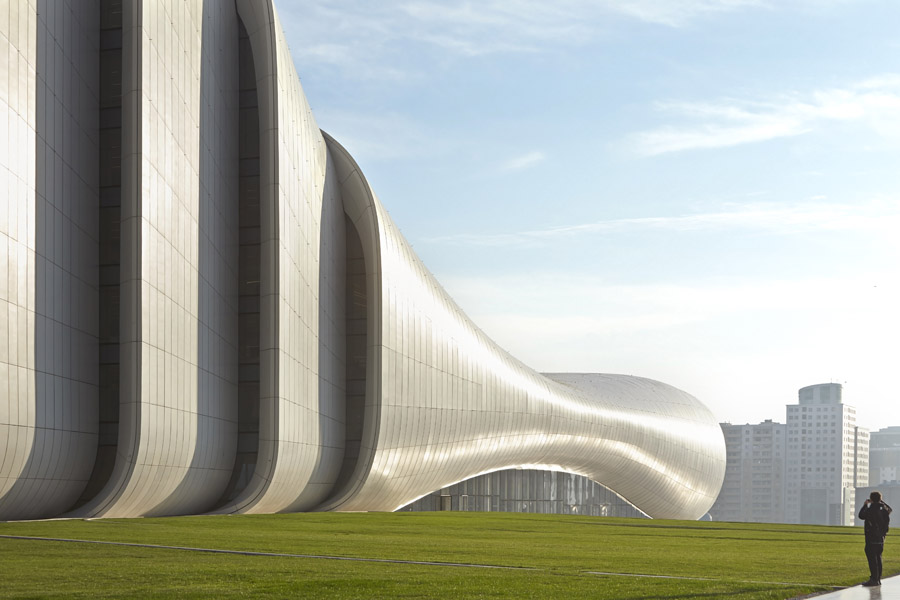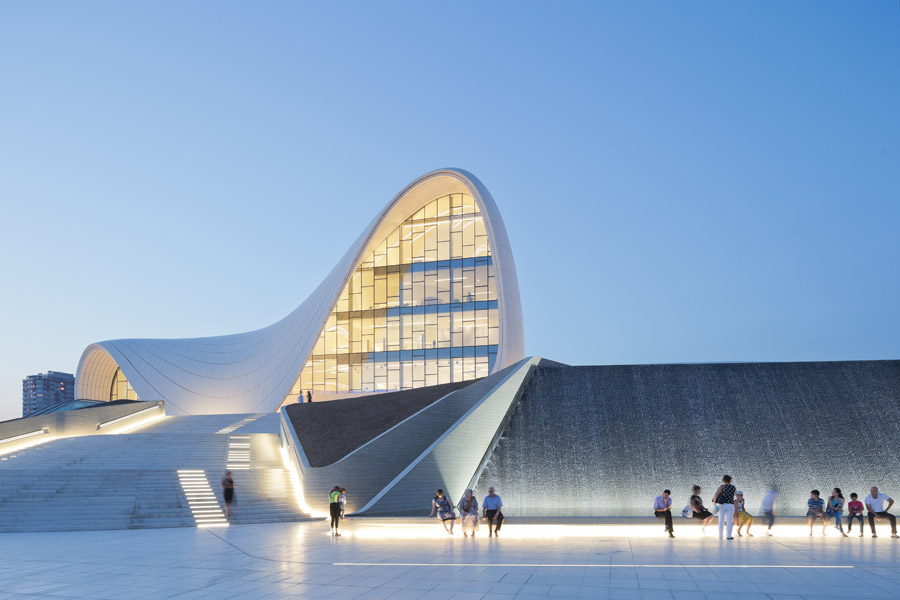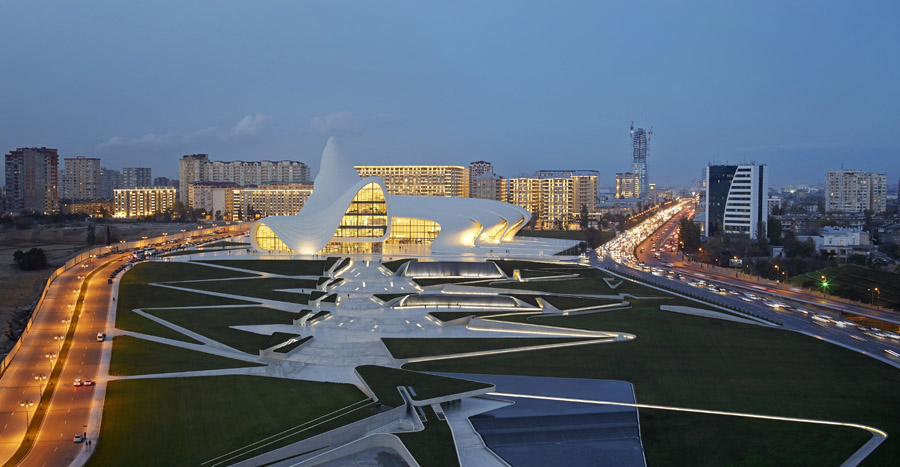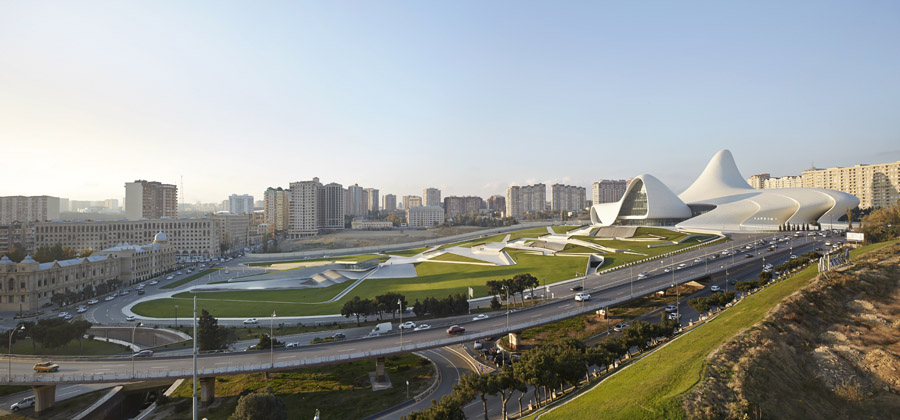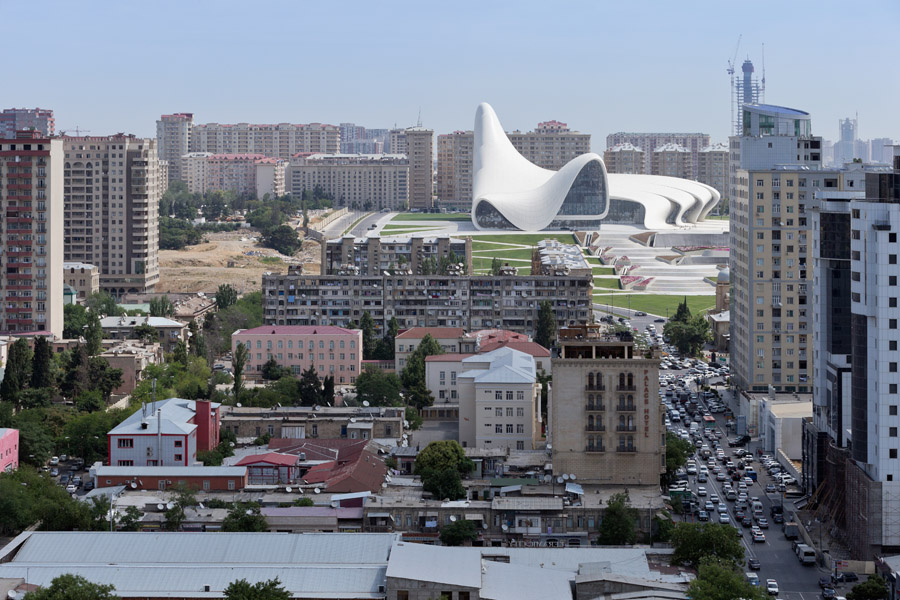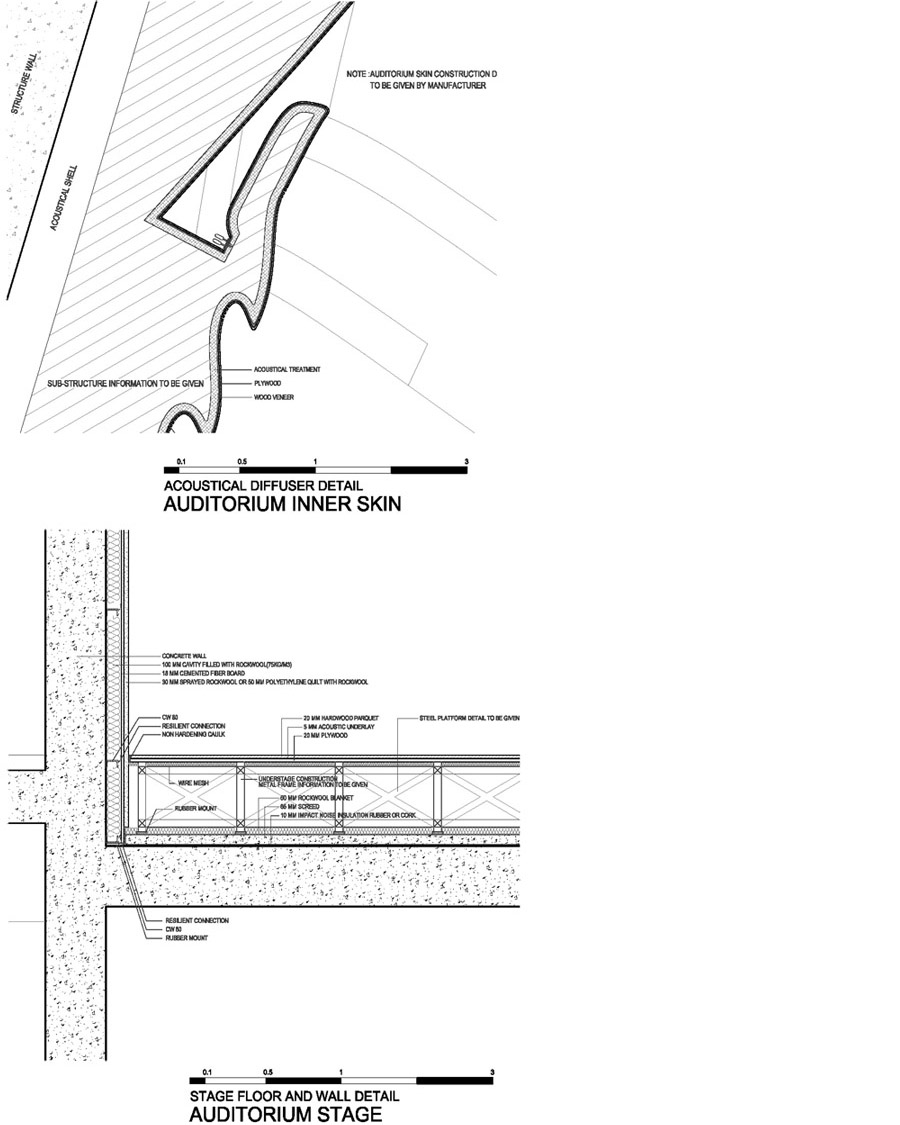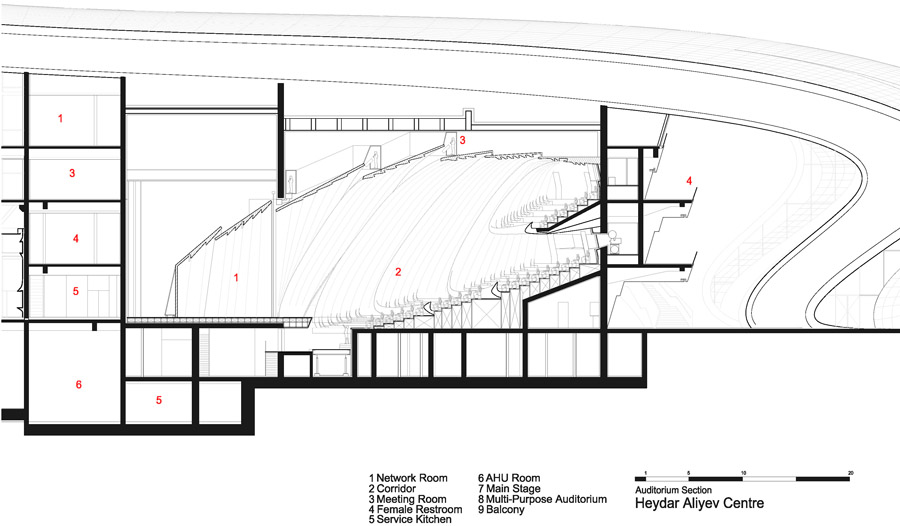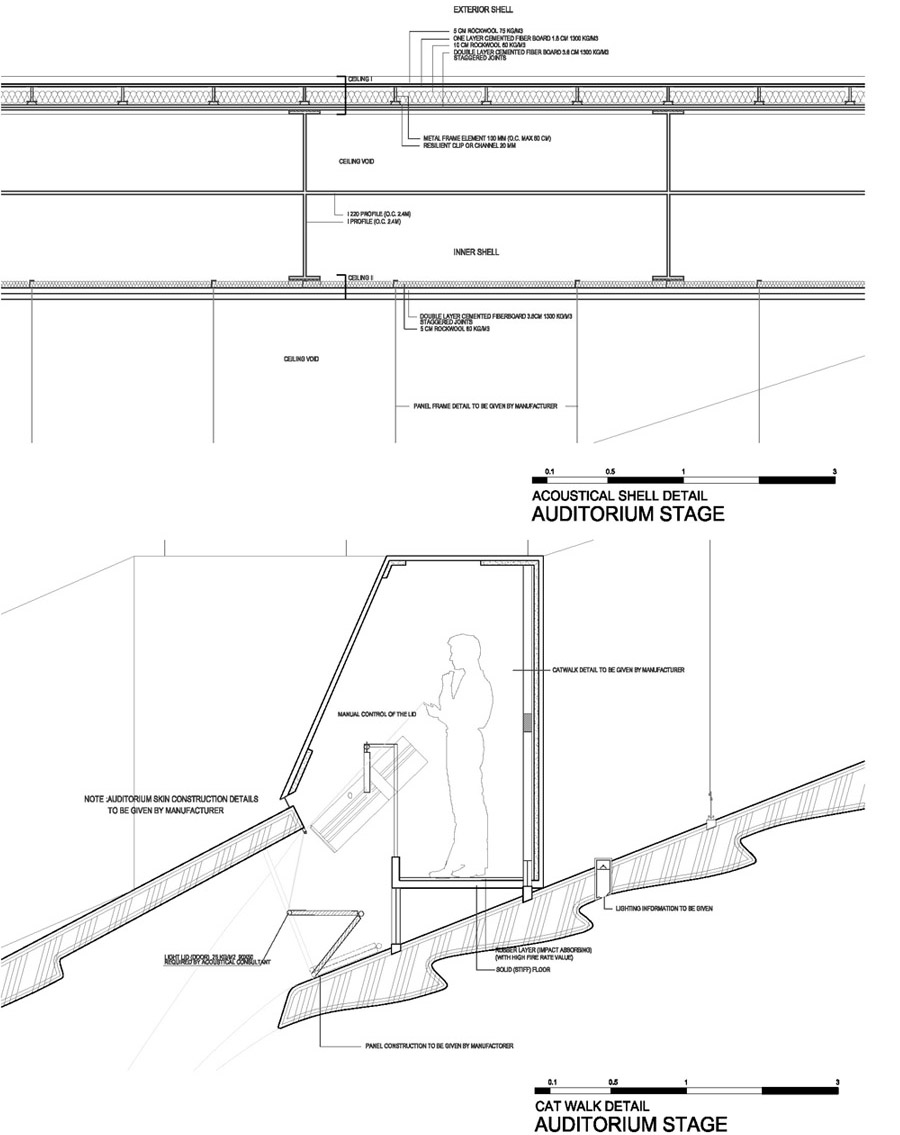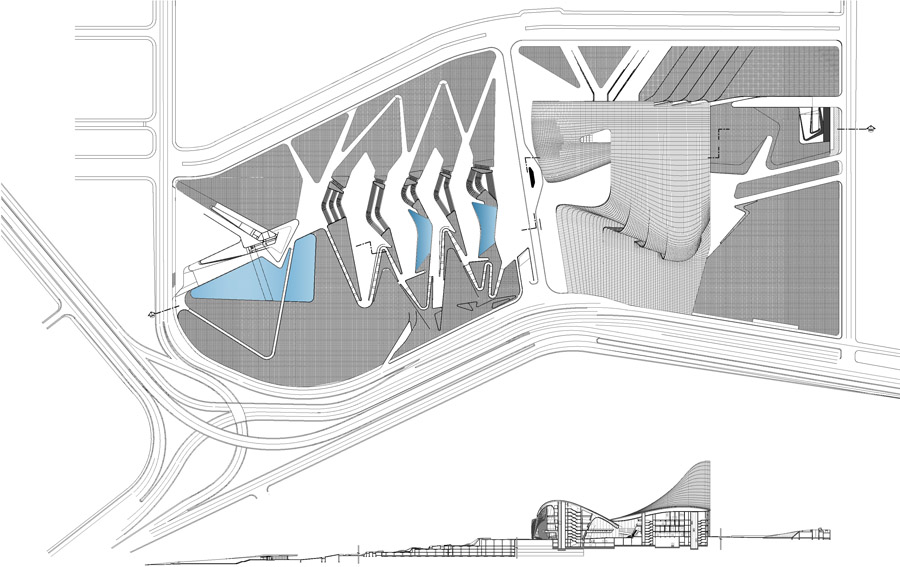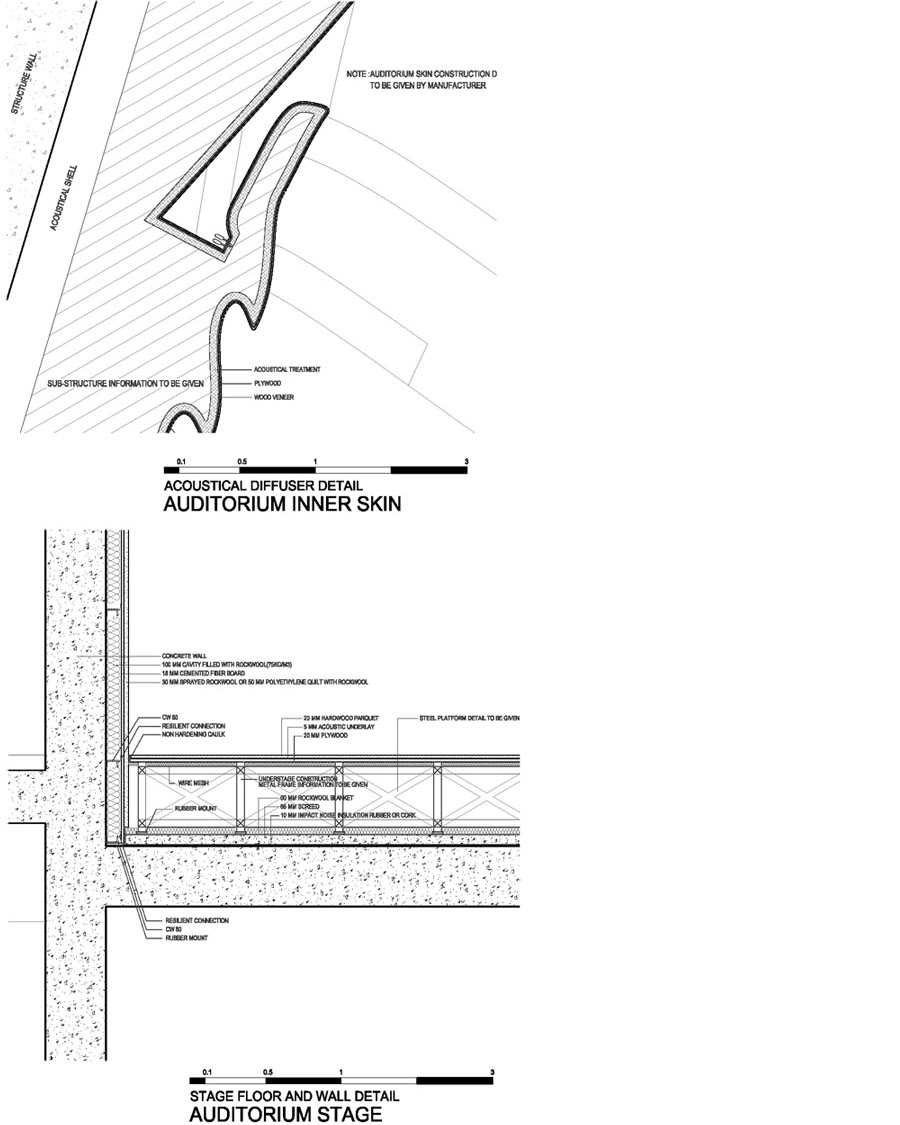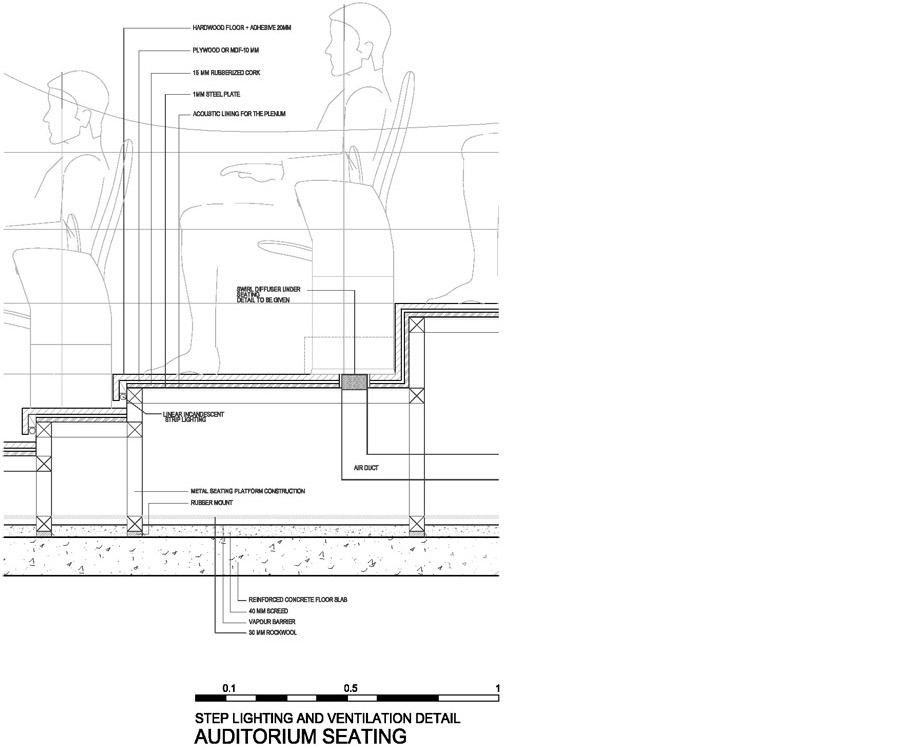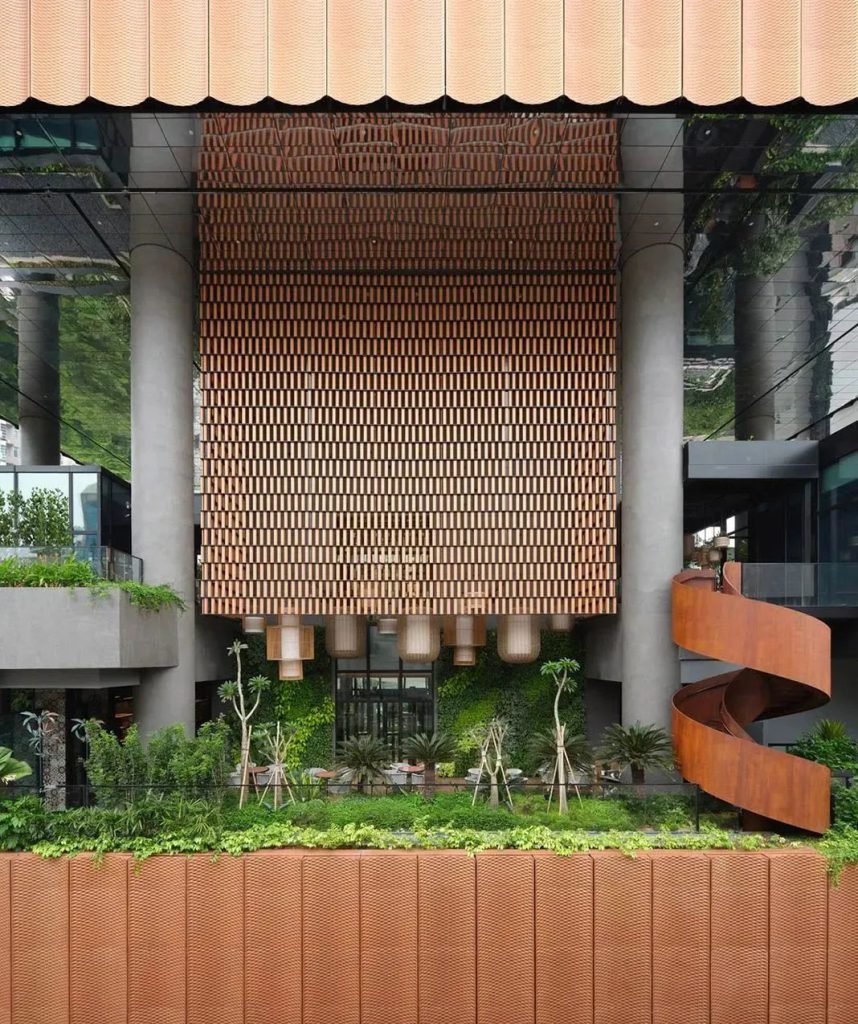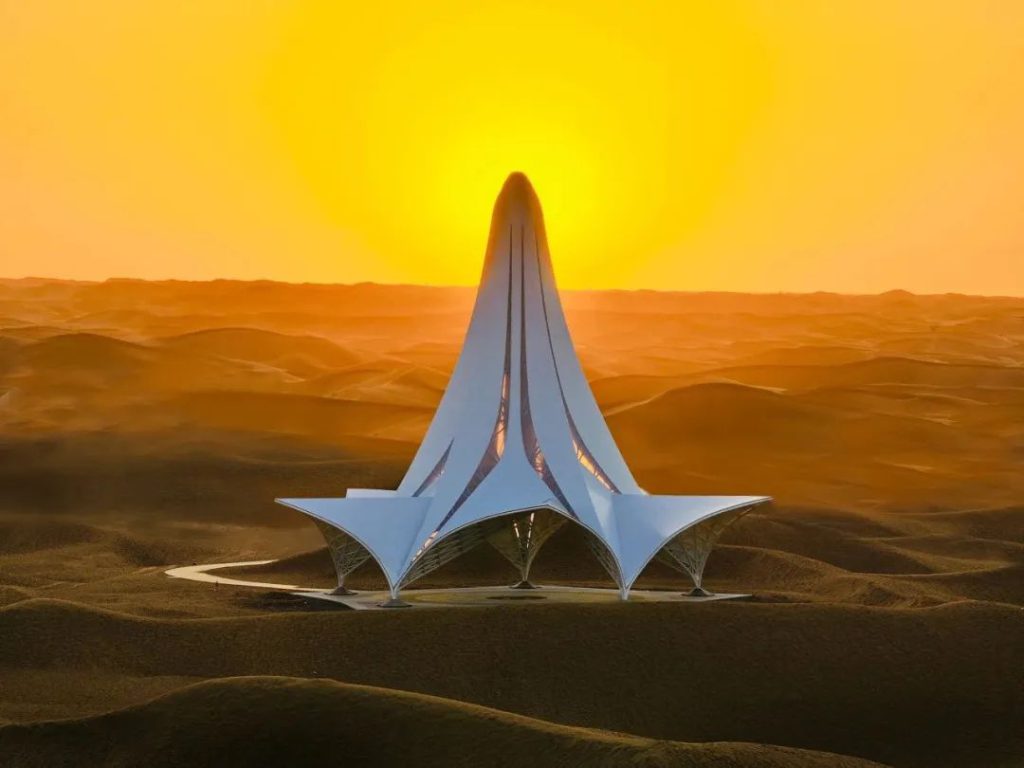阿塞拜疆从1991从苏联独立出来后,一直投入巨资建设基础设施和现代化建筑,希望从苏联巨大的遗留规划阴影中走出。1997年,阿塞拜疆任命扎哈哈迪德为盖达尔•阿利耶夫文化中心的总建筑师,希望这个建筑能够成为巴库的文化中心,真正为国家民族发展起到促进作用,而不是像苏联的纪念物那样空洞和大而无当。
English Text by Saffet Kaya Bekiroglu, Project Designer and Architect, Zaha Hadid
Architects
As part of the former Soviet Union, the urbanism and architecture of Baku, the capital of Azerbaijan on the Western coast of the Caspian Sea,was heavily influenced by the planning of that era. Since its independence in 1991, Azerbaijan has invested heavily in modernising anddeveloping Baku’s infrastructure and architecture, departing from its legacy of normative Soviet Modernism.
Zaha Hadid Architects was appointed as design architects of the Heydar Aliyev Center following a competition in 2007. The Center, designedto become the primary building for the nation’s cultural programs, breaks from the rigid and often monumental Soviet architecture that is soprevalent in Baku, aspiring instead to express the sensibilities of Azeri culture and the optimism of a nation that looks to the future.
盖达尔•阿利耶夫文化中心是一个建筑和广场连续融为一体的流线形整体规划,并成为城市肌理中不可分布的一部分,且重新定义了公共空间和节日集会空间的序列。那些精心设计的起伏,分叉,褶皱还有形态都让广场展现出热情开放拥抱城市的姿态。建筑也模糊了传统建筑与城市,与广场,与地面之间的分化。
The design of the HeydarAliyevCenter establishes a continuous, fluid relationship between its surrounding plaza and the building’s interior. The plaza, as the ground surface; accessible to all as part of Baku’s urban fabric,
rises to envelop an equally public interior space and define a sequence of event spaces dedicated to the collective celebration of contemporaryand traditional Azeri culture. Elaborate formations such as undulations, bifurcations, folds, and inflections modify this plaza surface into an architectural landscape that performs a multitude of functions: welcoming, embracing, and directing visitors through different levels of the interior.With this gesture, the building blurs the conventional differentiation between architectural object and urban landscape, building envelope and urban plaza, figure and ground, interior and exterior.
整体流动性的灵感不仅是全新的,也从当地的传统而来。伊斯兰历史悠久的建筑,书法,天花,壁画,装饰,艺术花纹的无缝连接,整体统一都给了设计灵感。建筑师在了解历史与传统的基础上,绝不模仿和使用意向,坚持在高层次发挥,通过现代的方式回应场地和各种条件。对于场地上的坡段用一个美丽的梯田式广场化劣为优,避免了额外的挖方或填埋,建立建筑与地下停车场的关联。
Fluidity in architecture is not new to this region. In historical Islamic architecture, rows, grids, or sequences of columns flow to infinity like trees in
a forest, establishing non-hierarchical space. Continuous calligraphic and ornamental patterns flow from carpets to walls, walls to ceilings,
ceilings to domes, establishing seamless relationships and blurring distinctions between architectural elements and the ground they inhabit.
Our intention was to relate to that historical understanding of architecture, not through the use of mimicry or a limiting adherence to the
iconography of the past, but rather by developing a firmly contemporary interpretation, reflecting a more nuanced understanding. Responding
to the topographic sheer drop that formerly split the site in two, the project introduces a precisely terraced landscape that establishes
alternative connections and routes between public plaza, building, and underground parking. This solution avoids additional excavation and
landfill, and successfully converts an initial disadvantage of the site into a key design feature. 
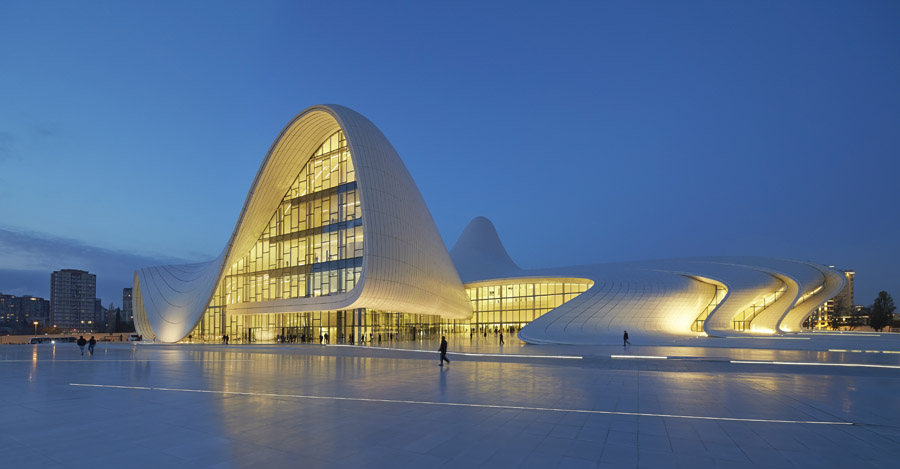

在这个流体建筑项目中,建筑表皮无疑是个大挑战,建筑师通过高级计算机运算和设计以实现建筑整体而有机的表皮。
Geometry, structure, materiality
One of the most critical yet challenging elements of the project was the architectural development of the building’s skin. Our ambition to achieve
a surface so continuous that it appears homogenous, required a broad range of different functions, construction logics and technical systems
had to be brought together and integrated into the building’s envelope. Advanced computing allowed for the continuous control and
communication of these complexities among the numerous project participants.
